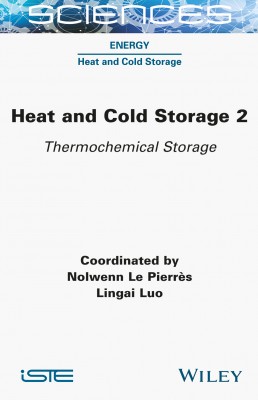
Heat and Cold Storage 2 focuses on thermochemical sorption storage processes – that is, absorption, adsorption and chemical sorption.
This book first analyzes the principles of sorption and defines the criteria for selecting the materials to be used, before presenting the three sorption storage technologies. It details the functioning of the absorption cycle in order to highlight the future challenges of this method. Next, the book examines storage by physical adsorption. Then, it presents the fundamentals of this phenomenon and a description of solid-gas adsorption cycles and systems, followed by a number of examples of prototype installations. Finally, the book describes the phenomenon of heat storage by chemical sorption from the scale of the reactive material to the scale of the process, before putting the state of the art of possible improvements into perspective and illustrating various applications.
1. Materials for Thermochemical and Sorption Heat Storage, Kokouvi Edem N'Tsoukpoe.
2. Heat Storage Using Absorption Processes, Nolwenn Le Pierrès.
3. Heat Storage Using Adsorption Processes, Larysa Ratel, Kevyn Johannes and Frédéric Kuznik.
4. Heat Storage by Chemical Sorption Processes, Antoine Perrigot, Driss Stitou and Maxime Perier-Muzet.
Nolwenn Le Pierrès is a professor at the Université Savoie Mont Blanc, France. She also teaches Energy at the Polytech Annecy-Chambéry engineering school and is a researcher in the LOCIE laboratory at the Institut National de l’Energie Solaire.
Lingai Luo is a CNRS research director who has developed an original research strategy for optimizing energy systems, using a multi-scale approach combined with an innovative fluid distribution optimization method.